For some time I have been wanting to take a look back at Sumiko as a topic in my series (Part 1, Part 2, Part 3) on phono cartridges. I go way back with Sumiko, to 1976 and its early days with founder David Fletcher. I believe most of my readers are familiar with Sumiko cartridges and electronics, but may not know that their first cartridges were called Talisman.
Sumiko, in its other business as a U.S. distributor, has a long history with numerous audiophile lines and some of the best names in High End audio, including: the MDC 800 tonearm, Sumiko Premier tonearms, Sonus speakers, SOTA turntables, Talisman cartridges, SME turntables and tonearms, Grace arms and cartridges, MMT tonearms, Vienna Acoustics speakers, Sonus Faber speakers, Pro-ject turntables and tonearms, plus of course Sumiko cartridges. Most recently, Sumiko began distributing Rotel electronics and Bassocontinuo equipment racks.
David Fletcher and two business partners founded Sumiko Audio in 1972, primarily to import products for the U.S. audio market. The company was named after one of the original partner’s wife, who later joined the company.
- Historical Fact: Before David Fletcher started Sumiko he was a particle physicist at the Lawrence Berkeley National Laboratory .
Because of David’s background in physics and engineering, he took the role of design and product development. The original business plan was to import speakers from eastern Europe, but when this failed to work out, they decided to look into Japanese manufactured products. As one of the partner’s wives (Sumiko) had contacts in Japan and was fluent in Japanese, this shift made sense.
- Historical Fact: Sumiko’s MDC 800 tonearm (also called “The Arm”) was the first product designed at Sumiko. The MDC 800 tonearm was considered by many to be the best tonearm design at the time. It had a $1,200 price tag, making it one of the most expensive as well as most advanced tonearms available in the 1980s.
I started selling their new Talisman moving coil cartridges in 1982. I recall they released four models at the time; Talisman A,B,S and Virtuoso.
In 1980 David, not happy with current turntable designs, began working on a table for Sumiko. This eventually led to the formation of SOTA industries and the SOTA Sapphire turntable. The first SOTA turntable was a great match for David’s MDC-800 tonearm. In 1980, it was the only high-end turntable manufactured in the U.S. SOTA’s success helped launch a new wave of US turntable manufacturers.
- Historical Fact: In 1983, Sumiko introduced its second in-house designed tonearm, the MMT (medium mass tonearm). This arm was only in production for a few years.
- Historical Fact: In 1984, Sumiko released the FT-3 tonearm (a more affordable alternative to the MDC-800) along with the Alchemist line of high-output cartridges. These were one of the first high-output moving coil cartridges in mass production.
Fletcher and the design team developed what they called the “Intensified Focus” generating mechanism. This design was able to increase cartridge output without adding extra moving mass to the system. The original designs had a rated output of 2.0 millivolts. This was the first high-output MC designed for mass production. David’s design had a lasting impact in the market. Today, most modern cartridge manufacturers produce a high-output moving coil cartridge influenced by David Fletcher’s pioneering designs.
- Historical Fact: Sumiko receives U.S. Patent 4,675,859 in 1985 for design work on the Alchemist line of cartridges.
In 1987, Sumiko introduced their Premier FT-4 tonearm, which was an update of the FT-3 and, like all their arms, made by Jelco in Japan. Its features included adjustable arm height, overhang, offset angle, azimuth, and anti-skate, and the arm featured fluid damping. When fitted with the VTA-16 arm mounting base, the arm height of the FT-4 could be adjusted during play.
- Historical Fact: 1990 — Sumiko introduces its first Sumiko-branded cartridges, the Blue Point, Pearl, Black Pearl and Oyster.
Besides his involvement in Sumiko and SOTA, David began offering design improvements to other audio companies and manufacturers, including SME and Basis Audio. David saw a future in digital audio and eventually decided to focus all his attention there, and he sold his shares in Sumiko and SOTA. His later work at Pacific Microsonics led to HDCD technology in 1998.
Many of you may know that back in 2007, Fine Sounds, an Italy-based conglomerate, acquired well-known Italian speaker company, Sonus Faber. Two years later, Fine Sounds added Audio Research to their holdings. In 2010, they added Sumiko, followed the next year by Wadia and, in 2012, Fine Sounds bought McIntosh Labs from D&M Holdings, making Fine Sounds a powerhouse of audiophile brands. In 2016, Fine Sounds was officially renamed the McIntosh Group.
To help me research the history of Sumiko Audio, I reached out to Buzz Gadard, Sumiko’s Brand Director. The following is a transcript of that conversation:
Marc: First, for the benefit of the readers, can you tell me about your history?
Buzz: I majored in Music composition and Music Technology. I play guitar, flute and sax, but frankly I suck. But I am good at playback, and have always loved listening as well as creating. My first audio job was setting up and repairing turntables and speakers. After paying my “retail dues” I worked with Henry Kloss (at both Kloss Video and later Cambridge Soundworks), started and ran the consumer division of Lexicon, as well as managing Audioaccess and Citation for Harman International. Turn of the century led me into networked audio/video/control with NetStreams. I have consulted for a bunch of other CE companies, ran my own custom install company and then joined Sumiko half a decade ago. Once again in turntable land!
Marc: What are your duties at Sumiko?
Buzz: I am the business director of Sumiko Phono Cartridges and for Pro-Ject (which we have distributed for decades). For Sumiko phono cartridges, this involves everything from product development and planning to distribution and support. With Pro-Ject, the focus is primarily interfacing with the factories in Europe and managing sales/distribution in the U.S.
Marc: Do you know what the initial intent was for the founding of Sumiko Audio?
Buzz: Passion, love of music and a desire to supply the best audio and values in the industry. It would be nice to make a living doing these things too!
Marc: What if any are the technological advantages of the new Sumiko line of cartridges?
Buzz: There are not huge technology differences between cartridges, as the physics and manufacturing of them is pretty mature (compared to most any other CE product). The focus for us is musicality and accuracy (a sometimes challenging combination). Trackability is always at the forefront of considerations. If the stylus can’t track the groove, there is simply no way to make up for that lost information down the line. We have focused a lot of energy on…energy. Specifically, how to ameliorate some of the effects of resonances and vibrations. Sumiko uniquely combines nearly half a century of cartridge development with modern materials and meticulous hand craftsmanship.
Marc: Can you talk about Sumiko’s involvement with Pro-ject?
Buzz: Sumiko is in multiple businesses. As the U.S. distributor, we work very closely with the factories in Europe, for both standard and custom products. On the cartridge side, we strive to take advantage of the technological and market strengths that Pro-Ject enjoys. Our cartridges work extremely well with the advanced designs and materials Pro-Ject is famous for.
Marc: Sumiko to me has always been a company dedicated to analog technology, developing, producing and selling cartridges, turntables and tonearms. When and why did Sumiko branch out into the digital world?
Buzz: Sumiko is about audio and music. Although the company was founded prior to digital audio being available in the home, we don’t view it as either/or. In the past we distributed high end video projectors and myriad digital products. Currently Sumiko sells a lot of “digital” and networked products from Pro-Ject/Box Designs and Rotel. We have close relationships with companies like MQA, Qobuz, Roon and Tidal.
Marc: Can you tell me about Sumiko Audio’s involvement within the McIntosh Group?
Buzz: The McIntosh Group owns Sumiko (along with Sonus Faber and of course McIntosh). We are able to leverage some great resources that would otherwise not be available to a company of our size.
Marc: What things can we expect from Sumiko Audio over the next five years?
Buzz: We have big plans for both Sumiko phono cartridges (the line is going to expand in several different directions and we are very excited!) and the distribution business will continue to grow. We continue to find new opportunities as the products and market channels evolve. It is a great era for our business in terms of products; we see it as a new golden age of analog and of course the digital world has changed every aspect of recorded music.
Marc: Is there anything else you would like to tell our readers?
Buzz: This in the height of a pandemic. The first thought is, take care of yourself and your loved ones, which helps take care of everyone. Support the musicians you love and the industry that supports them. Buy music and merch, preferably from the artist direct or artist-centric sites like Bandcamp and Burning Shed. Of course, if you’re comfortable with it and can do it safely, support your local music stores and equipment dealers. And be nice…
I appreciate Buzz’s input to this article. With Sumiko’s continued association with the McIntosh Group I think we can all look forward to some exciting and innovative products from Sumiko in the future.
Copy editor: Dan Rubin
- (Page 1 of 1)


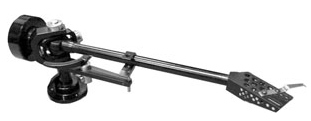
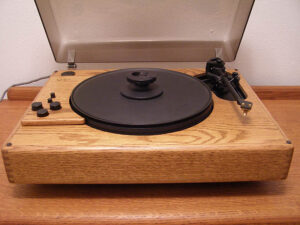
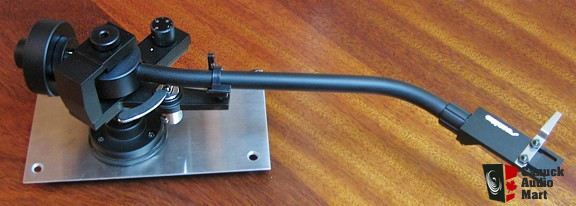
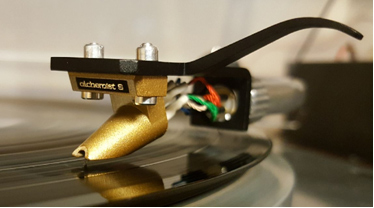
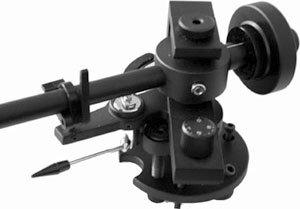
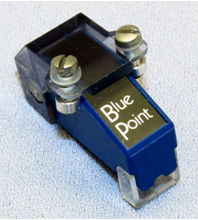
Just stumbled on this series of articles on phono cartridges by my friend Marc Silver. Thanks for the thorough research and sharing of your knowledge, and that of your interviewees. Well done!